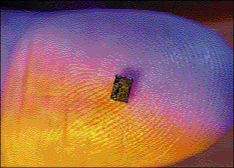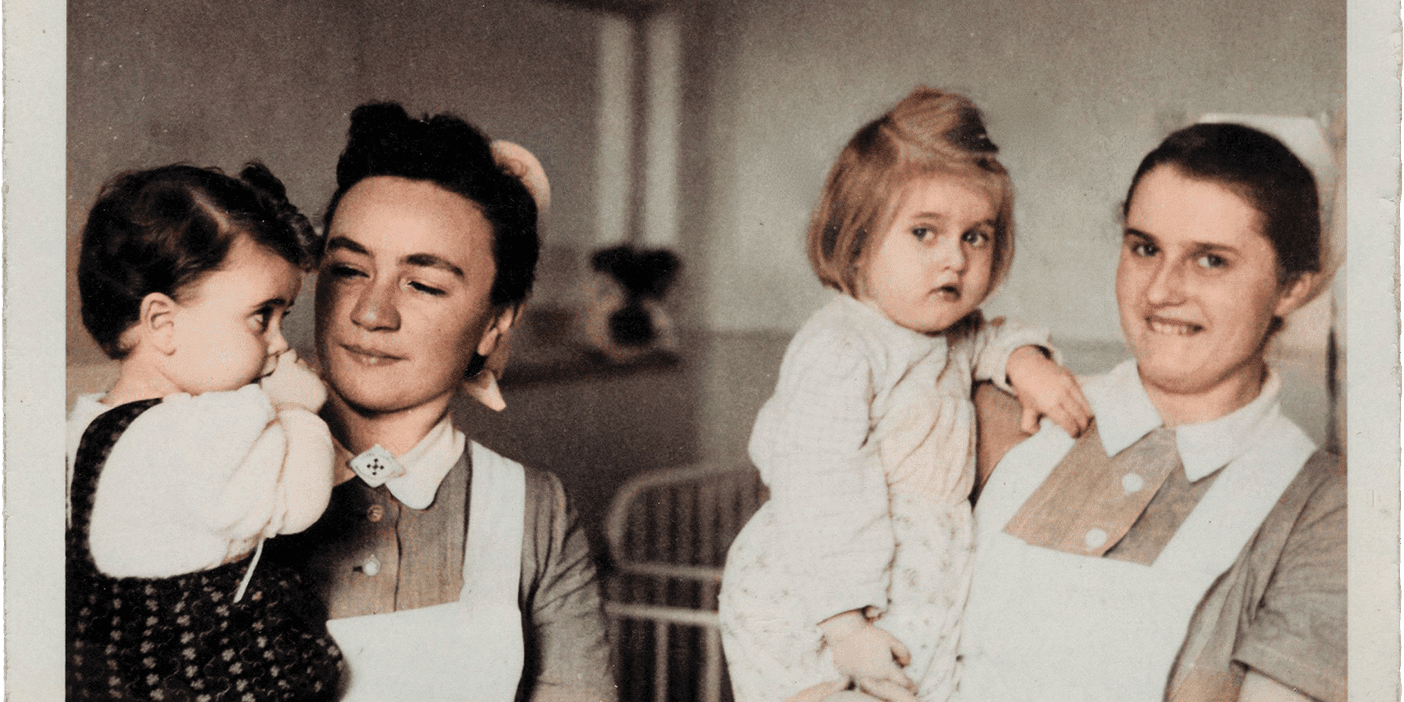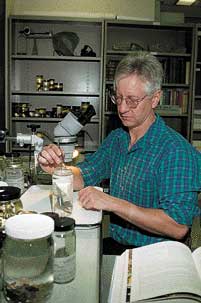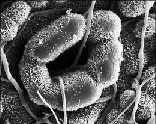By Stephanie Tripp
People who wear hearing aids worldwide will soon be introduced to new digital hearing-aid technology first developed on BYU campus.
Douglas Chabries, dean of BYU’s College of Engineering and Technology, has spent the last 15 years studying how the human ear hears and attempting to replicate the process electronically. The result is a new digital hearing aid that will be available in July 1998. Produced by Sonix Technology, a company in Salt Lake City, the hearing aid is smaller than most and enhances sound clarity.
“We’ve tried to make this hearing aid distinctive from other hearing aids in that it is very high fidelity, it’s digital, and it’s very precisely adjusted to the individual wearer,” Chabries says.
Chabries and BYU colleague Richard Christiansen developed this technology by creating a mathematical model of the inner and outer hair cells and the cochlea, the partsof the ear and brain that detect and process sound. Using this model, the researchers theorized how hearing begins to fail and how to compensate for failing or damaged components so a person could hear more normally. The mathematical formulas composing the model were then programmed on a computer that eventually was made small enough to fit into the ear canal.

The tiny computer chip on this finger was developed at BYU and is the main component of a new digital hearing aid that, compared to other hearing aids, is smaller, has more frequency bands, and suppresses background noise better.
“The computer tries to emulate what the sound should be to produce normal hearing in a hearing-impaired ear,” says Chabries.
Preliminary tests of the new hearing aid have indicated great success. The computer chip accommodates more frequency bands than other digital hearing aids, a step that has required careful study and research, Chabries says. The BYU/Sonix chip is the first digital aid to have nine bands, each representing a different frequency of sound.
With multiple bands, audiologist Darrell Rose explains that it is easier to adjust the sound level for the hearing-aid wearer. “If you only have one band and you have hearing loss at a higher frequency and you try to boost the band up, the lower frequency will also go up,” he says. “So, when the individual hears a loud low sound, you have to get them off the chandelier.”
In addition to the multiple bands, the BYU/Sonix computer chip suppresses background noise. “Compared with other hearing aids, we can suppress the background noise without corrupting the sound. That’s the big difference,” Chabries says.
Rose, an adjunct professor at BYU, explains that background noise is a difficulty for individuals who wear hearing aids; the traditional hearing aid tends to amplify everything, including background noise. The BYU technology, however, suppresses that noise. “I think this is going to be a significant breakthrough. The multiple bands and noise suppression will, I think, make this hearing aid stand out,” says Rose, a former director of audiology for the Mayo Clinic who is working closely with Sonix on the project.
Christiansen, a professor of electrical engineering, agrees that this chip appears to be superior to any hearing aid in the market. “Virtually all hearing aids amplify sound, and there have been various attempts to suppress noise and feedback. But they have not been very successful,” he says. “This hearing aid, however, sounds better. The intelligibility is better.”
The researchers have completed testing with nearly 70 people at the Speech and Hearing Clinic at BYU and the Mayo Clinic to back up their claims, Chabries says. The responses have been positive, says Rose, who has been on the front lines testing the product. “The main thing people say is that the sound is more natural; it’s more comfortable,” he says.
Rose also points out that in addition to the sound quality of the computer chip, the technology has an advantage because of its size. “The digital chip is much smaller than the analogue chips that have been used in the past,” he says. “The digital chips are really, really tiny little rascals.”
Chabries says the small size of the chip is due to the work of California Institute of Technology faculty member Carver Mead. “Carver Mead is a pioneer in integrated circuits,” he says.
Sonix Technology, which has been working with Chabries and researchers like those at Caltech to license and extend the technology, is in the process of placing the computer chip in four different hearing-aid models. The BYU/Sonix chip will be able to run on a battery for about two weeks–a long time for a hearing-aid computer battery, Chabries says.
But the current problem facing Chabries and the others is the speakers. “We have this high fidelity device playing into this low quality speaker, so the output has been limited,” Chabries says. However, researchers are working on the problem. “We’ll find out in July how successful we are,” he says.
Chabries became interested in studying sound at his first job. After earning his bachelor’s degree in 1966 from the University of Utah, Chabries was employed by the U.S. Navy for 12 years working with sonars or sound navigation and ranging. During this same period, Chabries returned to school and completed his master of science degree at Caltech and a PhD at Brown University. In 1978, when Chabries came to BYU to teach, he naturally teamed up with Christiansen in speech research, quickly focusing on developing a digital hearing aid. He has since published 68 scholarly articles on the subject and holds 12 patents with two pending.
Christiansen completed a bachelor’s degree in electrical engineering in 1961 from Rutgers University and then a master’s degree in physics from the University of New Mexico followed by a PhD from the University of Utah. He has spent 24 years conducting speech research.









